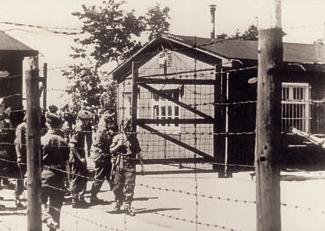The Internment Camp
In accordance with the decisions made at the Potsdam Conference in the summer of 1945,around 320,000 Germans were interned in the four occupied zones of Germany; around 93,000 of them were arrested in the British zone. Some of the former Nazi concentration camps like Neuengamme in the British zone, Dachau in the American zone and Buchenwald and Sachsenhausen in the Soviet zone were used to hold these internees.The official name of the Neuengamme camp from November 1945 was “Civil Internment Camp No. 6” (CIC 6). It remained operational until August 1948. The majority of the internees weremembers of the SS and officials of the Nazi state.

The Arrival of the British Army
On 2 May 1945 ,the first British troops reached Neuengamme concentration camp only hours after the last SS men had left. In the following days, members of the British Army looking for a suitable site to house DPs and POWs visited the grounds, where they met some former prisoners who had been in hiding or had returned to the camp. The former prisoners showed the soldiers, as well as the arriving Soviet DPs and German POWs, around the grounds and told them about the concentration camp. Parts of the camp had been looted by the local population or by DPs, so the British Army called for workers from the Bergedorf employment office for clearing duties. At the end of May 1945, POWs from the Waffen SS were brought to the camp to be detained there.
The Internees
Faced with the scale of the Nazis’ atrocities, the Allies had decided early on to take measures to stem National Socialism in German society after an eventual Allied victory. One of these measures was the automatic arrest of members of certain groups, such as officials of the NSDAP and members of the Gestapo, the SD (Sicherheitsdienst, the securityservice), and the SS, as well as both German and non-German members of the Waffen SS. The majority of internees after the war did belong to one of these groups, but the internment camps in all four occupied zones also held suspected war criminals and people interned for security reasons.